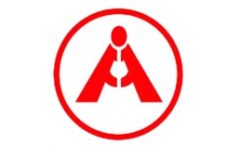You can do that with the help of online tutors, for example on Preply, Italki and Verbalplanet. In fact, many people who went to Japan to do exactly that later had to admit that it isn’t as simple as it seems. First, because many people will want to speak English with you and second, because you won’t be able to follow complex conversations at first and that could be frustrating. How can you learn this different but important alphabet?
- Depending on how you learn best, you can take lessons either privately or in a group.
- One additional piece of reading I’d recommend is this article on Keyword Mnemonics.
- This sounds like common sense and advice you’ve probably heard before, but very few people do this.
- If you love learning Japanese with authentic materials, then I should also tell you more about FluentU.
And although everyone will experience conscious incompetence to some degree, some people can get through it quickly and some get trapped here for years. Most, unfortunately, can’t make it through at all and give up. Most will teach you the same content one way or another, so pick one that you feel fits your learning style. At your currently level, most of the new words you encounter will probably be hiragana or katakana-only words. For now though, your goal is to develop a habit of collecting, processing, and studying vocabulary that is unfamiliar to you.
If you are trying to learn the jouyou kanji (2,136 “regular use” kanji), break it down into smaller chunks. Most of the time, a good Google search can find the answers you seek. But when you need more insight or advice, I recommend asking someone knowledgeable for help.
There are many learning materials, especially for beginner levels. If you’re taking the JLPT, this is an excellent resource. It’s written in Japanese and it has intensive exercises for every level. It covers everything from vocabulary to grammar, writing and more. Rocket Japanese is one of the most comprehensive Japanese courses out there.
Japanese Learning Resources
Duolingo offers short, snappy lessons that only take a few minutes each to complete. These come with diverse exercises and use spaced repetition to make sure you remember the vocabulary. After checking your Japanese level for free, you’ll then be able to select the best course option for you. Depending on how you https://bigbostrade.com/ learn best, you can take lessons either privately or in a group. Based on an in-person learning academy in Tokyo, Coto Academy offers online courses that users can take anywhere in the world. It’s definitely worth checking out the YouTube channel, especially since George has an entertaining personality too.
What Is The Best Way to Learn Japanese?
Even more so than a class or textbook, you’ll need to make sure you actually sit down and make progress. Measurable progress, preferably, though you’ll have to figure out just how to measure it. So when you’re learning grammar with a textbook, coming into it with prior vocabulary knowledge brings you to that 80%. Leaving you just the grammar, which you can then point your laser-like focus towards. Most likely, you will find most of the vocabulary that you want to learn in your Japanese textbook (we’ll cover that really soon!).
How to Choose Online Japanese Courses
It uses mnemonics and worksheets that are designed to help you learn and be able to recall hiragana faster than you thought possible. FluentU brings Japanese to life with real-world videos. Learning Japanese becomes fun and easy when you learn with movie trailers, music videos, news and inspiring talks.
In the beginning, this will largely be grammatical things, and words that don’t use kanji, from your textbook. Later it will be vocabulary you pick up from signs, manga, and other real life sources. With this assumption about your knowledge best markets to trade in place, we’re going to go through some options for how you can learn Japanese grammar. This includes using a textbook as well as creating your own grammar program from scratch. Most likely, you’ll end up doing a hybrid of the above.
There are plenty of list-apps and pieces of paper out there, so it’s going to be difficult for me to say what you should use. I’m partial to Evernote and have my own processes built up there. And Airtable is a great spreadsheet app for people who don’t think in math. But maybe you like physical pocket-sized notebooks, to-do lists, your smartphone camera (with a special folder for future processing), or something else.
To remember this kana, think of it like an exotic bird. The feathery thing on its head gives it away that it’s exotic and not normal. It also lays exotic eggs, because it’s an exotic bird, after all. To remember this kana, find the capital A inside of it. This “A” will tell you that this kana is also “a” aka あ.
If you’re new to learning Japanese, please read the Starter’s Guide in wiki. (Expand to see link)
Let’s say you are learning the te-form of Japanese verbs. You already studied them and have a decent understanding of them. Do this several times, and you’ll hear yourself improve in just one session. No matter how much you think you suck now, keep doing this often, and your pronunciation will skyrocket.
Reddit user Zwergkrug created some really beautiful PDF posters with tables that summarize all the grammar points in the Genki textbooks (verbs, adjectives, etc). This is a good one to print out and keep laminated as a reference. Reddit user SusieFougerousse created a VERY comprehensive list of free online resources for learning Japanese. P.S. We’re working on adding videos to this guide, so check back occasionally if you’re having trouble with pronunciation (because videos will help a lot with that!). There are plenty of apps and resources out there to help you drill as well.
